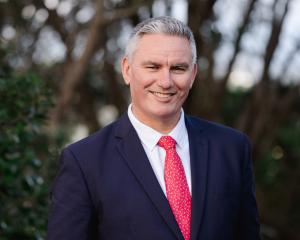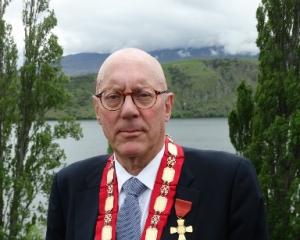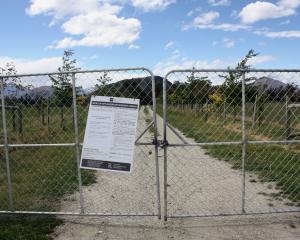Independent commissioners Mike Garland, of Christchurch, and Andrew Henderson, of Dunedin, heard from several submitters yesterday, including three experts submitting on behalf of a group of landowners comprising Arrowtown South, which has put forward private plan change 39, seeking consent for 215 new homes and amenities in a staged development.
Queenstown Lakes District Council senior policy analyst Mark Rushworth said the district was one of the fastest-growing areas in the country and had a history of growth pressure.
The proposed boundary had been slightly altered since it was publicly notified, with Jopp St and a section of McDonnell Rd now proposed to be included.
While 537 submissions were received on plan change 29 (471 supporting the boundary as proposed), few yesterday agreed with the amended boundary.
Don Spary, a resident for 41 years, said there was a need "to take a wider, balanced view".
Mr Spary said creating a boundary would not stop people wanting to live in the town and unless the council came up with a visa scheme or resident's permit specifically for Arrowtown, there would be growth.
"It's gone from being a mining town to a farming town to a tourist town.
"It's natural to want to retain it . . . [but] change is inevitable."
Resident Mia Bennie said she did not support the revised boundary.
She said development on Jopp St, the site of old sewage ponds, was inappropriate and not in keeping with Arrowtown's character.
Mrs Bennie also had issues with affordable housing being located in that area, with one of the Hope (Housing Our People in Our Environment) strategy's goals being to locate affordable housing near to employment and community facilities without long trips by car.
"I suggest that most of the employment opportunities are available in central Queenstown, not Arrowtown, which has a very small business district.
"Also ... as the school is near capacity it is likely any children would need to be transported to Queenstown also for education.
"I suggest that locating affordable housing on the residential boundary of Arrowtown away from the most likely employment opportunities in Queenstown is not consistent with the strategy's objectives and goals," Mrs Bennie said.
Another resident, Peter Roberts, said Arrowtown's appeal lay in its history, heritage, charm and above all the efforts made by so many in the past ... to keep it as close as possible to what it was originally.
"To many visitors, Arrowtown must seem like an idyllic sanctuary and a place of sanity.
"It is a perfect foil to the brash party-town tourist offerings of Queenstown.
"The more that Arrowtown becomes like Queenstown, the less value there will be for either," Mr Roberts said.
Mr Roberts also said the move by "developers and real estate agents" to promote growth in Arrowtown was "nothing more than commercial opportunism".
"At the present time, amidst a background of failed development, large holes in the ground and enormous scars on hillside faces and amidst a sea of `For Sale' signs, the concept of a rush for growth almost seems obscene," Mr Roberts told the hearing.
However, Ian Gordan, of Morrison Kent lawyers, representing the Adamson Family Ltd, Roger Monk, Mt Soho and others, told the hearing that without including the land proposed for plan change 39, it would be defeated, along with the district plan's objective.
The proposed boundary would see Arrowtown faced with unsatisfied demand by 2018, and would fall "hopelessly short" of meeting the identified needs of a community over the next 20 years.
It would encourage urban development to occur in ways "that could be undesirable."
The hearing continues today.












